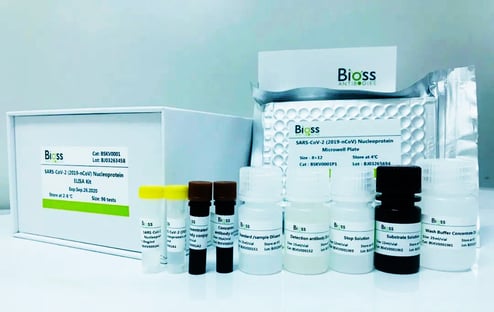Do we have to boil the western blotting (WB) sample before loading? The proteins extracted with denaturing lysate have already been denatured. Is adding the loading buffer and elevated temperature redundant to denature them again? Are the denaturation conditions the same for membrane proteins and other ordinary proteins? Do protein samples need to be re-boiled after boiling and stored at -80°C before using them again? All these questions are frequently asked in research labs. Here, let’s find out the answers together.
The first critical step to carry out WB is to separate proteins by size using sodium dodecyl sulfate-polyacrylamide gel electrophoresis (SDS-PAGE). Before SDS-PAGE, protein samples should undergo a thorough denaturation to lose all advanced confirmations and only present a linear primary structure. To do so, ionic detergent SDS, elevated temperature, and reducing agent are applied. The protein structure is sensitive to both SDS and elevated temperature. Therefore, heating up proteins in an SDS-containing loading buffer facilitates the process of opening up.
Given that the native disulfide bond in proteins cannot be broken by heat above 100 °C, the reducing agent DTT or β-mercaptoethanol is also added to the loading buffer to help break the disulfide bonds between/within the proteins. Therefore, the overall treatment with SDS, high temperature, and reducing agent makes protein fully open up and amino acids on the protein peptide chains exposed to the environment. In the SDS-containing loading buffer, the opened-up peptide chain binds to SDS to make them negatively charged. Thus, when a current is applied, all SDS-bound proteins in a sample will migrate through the gel toward the positively charged electrode. Proteins with less mass travel more quickly through the gel than those with greater mass because of the sieving effect of the gel matrix. Apparently, heat is a pivotal factor in influencing protein denaturation.
After we gave the above conclusion, someone may challenge us with why I was told that sample boiling might ruin the membrane protein detection by WB. To address this concern, we need to know the nature of membrane proteins. Membrane proteins are a class of proteins located in the cellular membrane, a hydrophobic environment, such as cytoplasmic membrane, mitochondria, Golgi apparatus, endoplasmic reticulum, lysosomes, endosomes, etc. Due to their hydrophobic nature, membrane proteins tend to aggregate and form dimers or multimers when they are boiled at high temperatures. Furthermore, the large aggregates may precipitate directly, and even if put into the gel wells, they may not run out of the well, resulting in subsequent assay failure. Many antibody companies also point out in their instructions that the temperature to help membrane protein denaturation should not exceed 70 °C. This is also the reason why after boiling the membrane protein samples, WB cannot detect Na-K+ATPase, the loading control of membranes.
Notably, some proteins are susceptible to elevated temperature, and even 70 °C is already too high for them. For instance, when detecting plant plasma membrane proteins by WB, the internal reference could be detected using 70 °C to help protein denaturation, but some target proteins could not be detected. It was found that the target proteins were best detected when the sample was denatured at 30 °C. If the target is a membrane protein, the best temperature (from ambient temperature to 100 °C) for denaturation should be determined carefully according to the sample to improve the detection efficiency.
Do I need to boil the sample after it has been cooked in a loading buffer and frozen in small portions at -80°C for reuse? The answer to this frequently asked question is, “that depends.” It is unnecessary to boil the “fresh” sample (a short period of one or two weeks) again because the reductant DTT or β-mercaptoethanol in the loading buffer has not yet been consumed, and the denaturation status of proteins is still stable. However, the new disulfide bonds will be formed after the reductant is consumed, leading to the precipitation of the protein. Therefore, it is necessary to denature the protein at the original denaturation temperature and add DTT or β-mercaptoethanol to the protein after prolonged storage.
What if WB proteins are extracted using denaturing lysate, and the extracted proteins are denatured already? Do they need to be denatured again by adding loading buffer and boiling before SDS-PAGE? The answer is “Yes.” The denaturing lysate may contain ionic detergents that destroy the advanced structure of the protein (secondary structure, tertiary structure) when lysing the samples. However, there may still be some proteins that have not completely become linear peptide chain structures without elevated temperature. By adding a loading buffer, the appropriate temperature treatment can make the protein denatured thoroughly. Moreover, the glycerol in the loading buffer will increase the sample density and prevent the sample from floating out from the sample wells. Therefore, although the extraction process denatures the protein, it still needs to undergo the normal denaturation process.
In summary, sample preparation for WB is not as simple as boiling samples in the loading buffer. How to make and maintain the linear primary structure of sample proteins is the core consideration. SDS, reducing agents, and the appropriate temperature together play the key role in ensuring the successful SDS-PAGE and entire WB.

